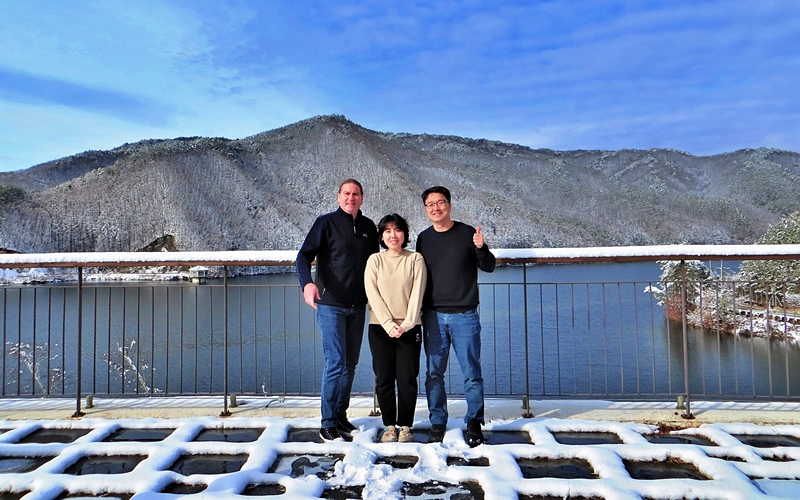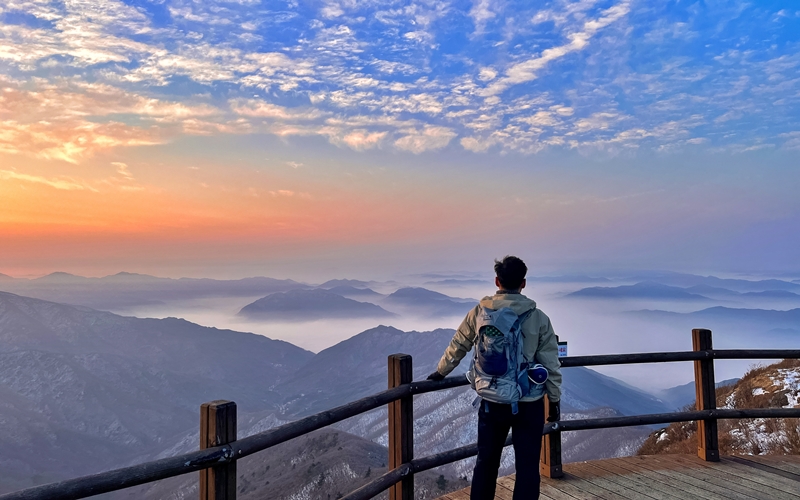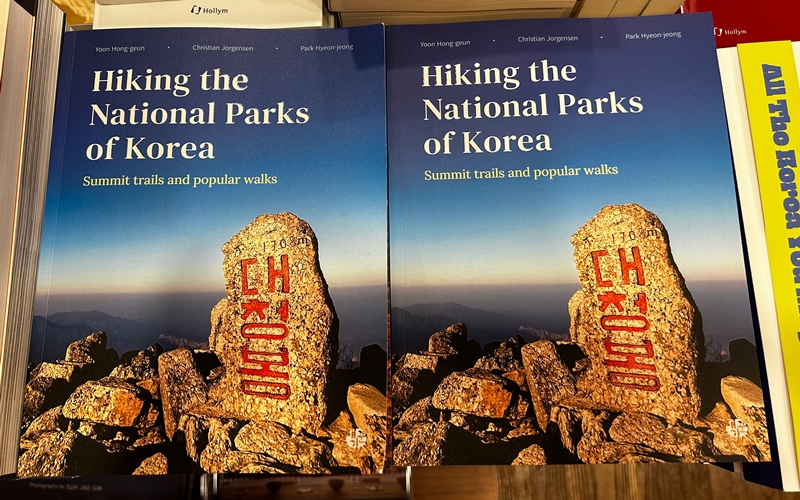
Writers of a new guide on the country's national parks -- Christian Jorgensen (left); Yoon Hong-geun, general manager of Sobaeksan National Park Nature Center (right), and center staff member Park Hyeon-jeong -- in February take a photo at the park in Yeongju, Gyeongsangbuk-do Province. The three often met at the center's management office to discuss content to include in Hiking the National Parks of Korea. (Christian Jorgensen)
By Margareth Theresia
"Korean national parks are nice as they're near cities and easy to visit, and have a bunch of plants and animals to see such as birds, fish, trees and flowers. Gorgeous temples and stone towers are also around hiking trails."
This is what Christian Jorgensen told Korea.net on July 16 in an interview through Zoom on why he loves the country's national parks.
An Australian "mountain man" and expat in Korea for more than 20 years, Jorgensen is the CEO of a language-related business based in Cheongju, Chungcheongbuk-do Province. He has visited all 23 of the country's national parks over the last eight years and covered about 300 trails evidently due to his interest and love for the nation's mountains and seas.
When he started hiking in Korea, he said he struggled to select the right mountains and trails not just because he did not know the difficulty levels, but the guide maps were complicated and no proper means of public transportation existed.
After joining the Facebook group Exploring National Parks to share information with other foreign visitors, he met Yoon Hong-geun, general manager of Sobaeksan National Park Nature Center.
"Many foreign hikers want to go to national parks but often struggle to find the right information," Yoon said. "Though I tried to assist through the community, I experienced time or physical resource barriers when trying to help everyone."
Yoon and Jorgensen met Park Hyeon-jeong, a center staff member fluent in English, to designate the most crucial information for foreign visitors to the parks. Over time, they agreed to write a guide to all of the country's national parks.

"People always associate hiking with climbing mountains but it doesn't always have to be climbing steep mountains and a difficult experience," Christian Jorgensen said. "You can choose summit hikes or enjoy valleys or coastal walks, and the views are spectacular whether you're on top of a mountain, in a valley or beside a beach." Shown is Jirisan National Park. (Park Hyeon-jeong)
The trio explored all 23 national parks and meticulously kept records for helping foreign visitors. They also received recommendations from staff at parks nationwide and got opinions from experienced members of mountaineering clubs, eventually finalizing trails including those for one-day trips and popular and summit courses.
Park said, "Most foreign visitors don't have cars, so we prioritized places near public transportation when considering similar conditions."
After undergoing a difficult process, they published last month the English-language guide Hiking the National Parks of Korea. The book introduces two trails from each of the country's 23 national parks for a combined 46 routes, highlighting not only parks with mountains but also those around the sea.
The guide has basic information about each park, how to get there, accurate explanations of trails and maps, photos of the main attractions and useful reference data for visits such as making reservations.

Most of the photos in the guide Hiking the National Parks of Korea are from its three authors. (Margareth Theresia)
So which one national park do they recommend to foreign visitors? After showing deep contemplation, they agreed on Seoraksan National Park since both mountains and seas are seen there.
Jorgensen said, "Each national park has its own charm and is very beautiful, so it's hard to recommend just one. I would say just start with whatever park is closest to you."
margareth@korea.kr
Most popular
- Military discharge sets stage for reunion of all 7 BTS members
- BTS to mark 12th anniversary of debut with 2-week festival
- Lee Jae-myung officially sworn in as nation's 21st president
- Presidents Lee, Trump discuss tariff deal in first phone talks
- President's 1st executive order is launch of economic task force
